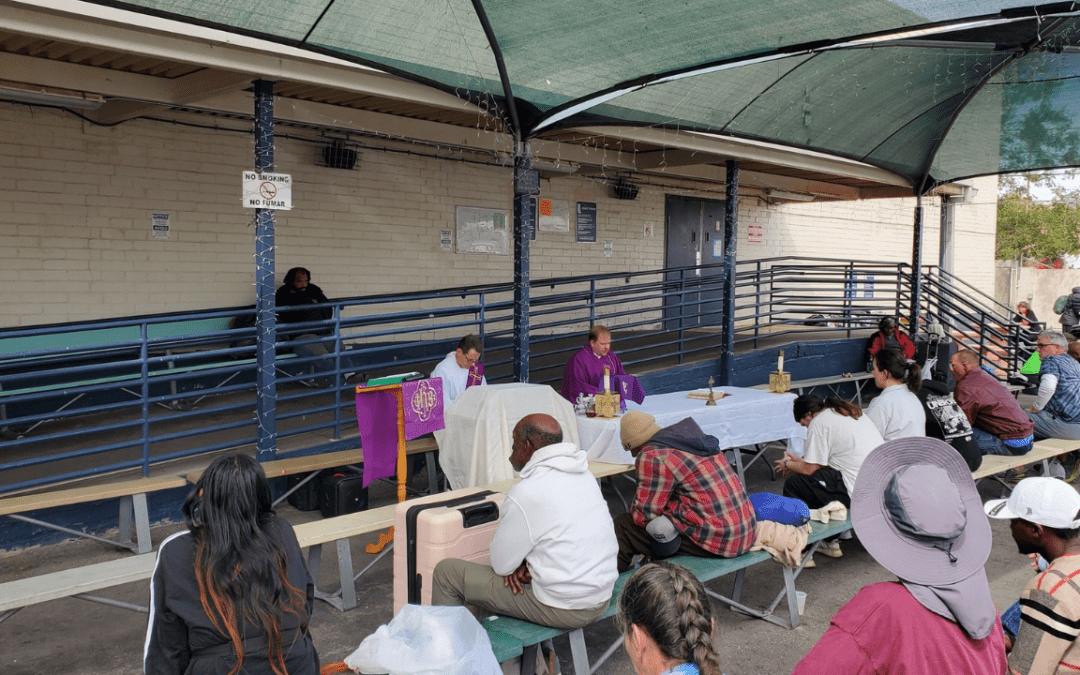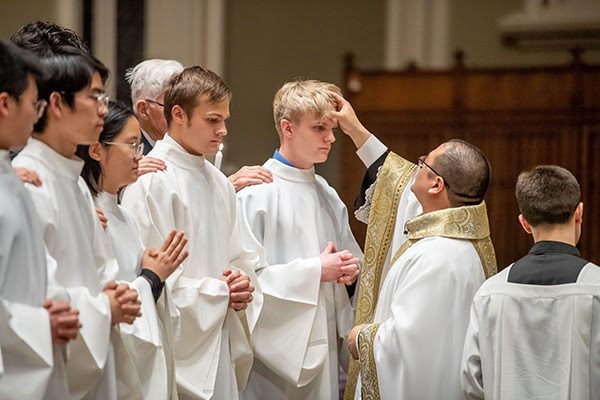Moreau wrote his own version of Ignatius of Loyola’s Spiritual Exercises, adapting them to what he saw as the particular needs of the religious whose spiritual father he was. The point of these exercises is, as Moreau puts it, “to transform [us] into [our] divine model by being united ever more closely to him.” They are a set of spiritual exercises that are meant to bring us to greater intimacy with Christ and thereby help us along our journey of becoming like him.
As we live out these fifty days of Easter joy, it’s fitting to turn to Moreau’s meditation on the Resurrection that begins the fourth and final week of these exercises. The meditation begins with three preludes that are like the stretching you might do before a physical workout. The first prelude grounds the whole meditation in joy, consisting of one short sentence: “He is risen!” We won’t be able to do the work of the meditation, some of which will be hard, if we don’t start by firing up that joy and amazement.
The second prelude takes us in a very different direction: Moreau invites us to experience the fear of the guards who had been assigned to protect the tomb. We don’t drop the joy at this point, but tasting that fear prevents our joy from being an easy joy. It prevents us from forgetting that the resurrection is threatening to those who would rather trust in some power that isn’t God. It prompts some compunction in us, as we remember whatever we trust in that isn’t God.
The final prelude takes that mix of joy and compunction and directs it to intercession. Moreau bids us “beg [our] divine Savior … to reawaken [our] faith, hope, and love … [and] find the model of the new life [we] ought to be living.” The second prelude makes us aware of our need; the first gives us confidence that there is one who can lead us to flourishing.
The rest of the meditation combines these moments of marvelous joy and soul-searching. Moreau alternates between describing the “glorious and victorious state” of our Risen Savior and asking us to consider the ways in which we do (and don’t) “live, speak, and act like … the saints, or, rather, like Jesus Christ himself.”
The meditation closes by inviting us to ask Mary to pray for us as we try to become “a stunningly bright reparation for [our] previously scandalous behavior.” Specifically, he invites us to meditate on each word of the traditional Easter Marian antiphon, Regina Caeli, that we still sing at the close of Night Prayer and at cemetery committals of deceased religious during this season. In this prayer, we address Mary as our Queen and then bid her “rejoice.” The grounds for this rejoicing is that the one she “merited to bear” has risen “as he said.” The resurrection is the most fundamental reason for joy for anyone. However, the way this antiphon names Jesus (he whom you “merited to bear”) reminds Mary (and us as we sing) of one of the things that flowed from the resurrection even though it began before Jesus was even conceived: Mary’s merit as a person. Mary can rejoice in her own goodness, even as she recognizes that goodness is pure gift from God. This antiphon helps us rejoice just as it also helps us long more hopefully to enjoy that merit, that God-pleasing kind of life, that Mary lived and we are invited to live too.
Moreau closes this meditation with a spiritual bouquet: “Let us move forward on the pathway of a new life.” Let us move forward indeed, joyfully, hopefully, spurned on by greater awareness both of our need and of God’s willingness to give.
Published on April 3, 2024




